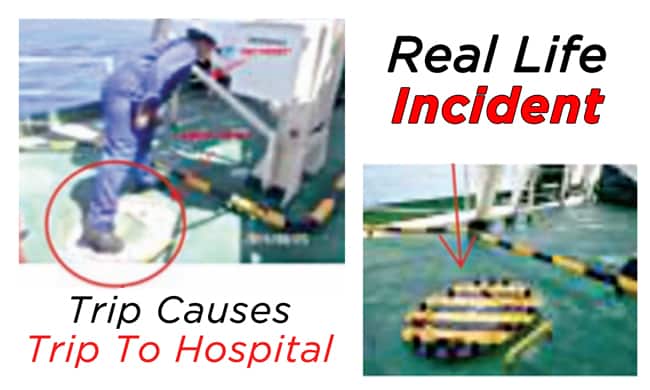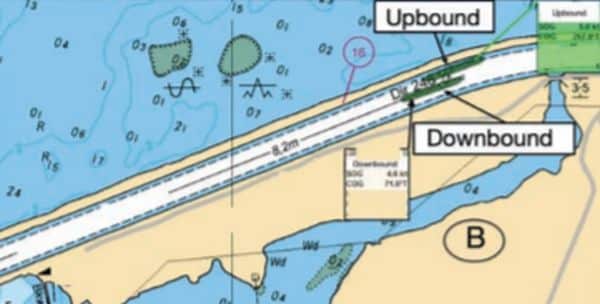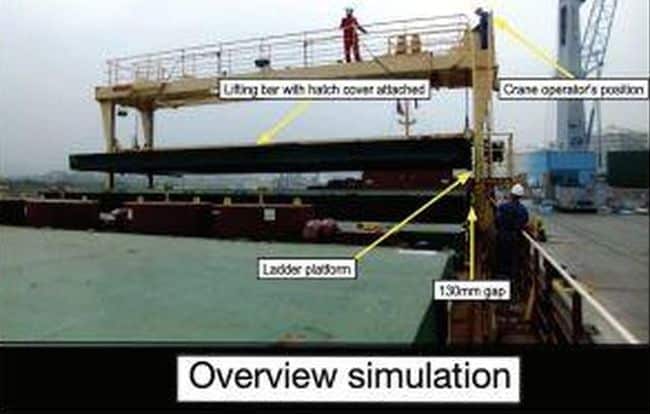Real Life Incident: Crushing Fatality While Moving Pontoon Tweendeck
A general cargo vessel had berthed and was discharging cargo from the upper port cargo hold. The tween-deck had been emptied and next the pontoons would be removed in order to access more cargo below.
The vessel’s crew began the tweendeck pontoon removal, a job they knew well. One crew member was assigned to operate the crane. One seaman was assigned as signal man and was equipped with a portable two-way radio to communicate with the crane operator. He was assisted by another crew member. Together, they would be rigging (hooking-on) the tween-deck pontoons in the cargo hold.

The two crew were positioned in the forward part of the cargo hold, where they would hook the pontoons on to the crane. A third crew member was assigned to un-hook the pontoons once they were laid down on top of other tween-deck pontoons against the bulkhead in the aft part of the cargo hold. This crew member had to shelter in a safe position aft until the first pontoon was laid down on deck. The dedicated safe position during the manoeuvring was inside a passage between the port and starboard holds.
The first pontoon was hooked on and, once at a safe distance, the signalman gave hoisting orders to the crane operator through his portable two-way radio, as well as the usual hand-signal. As tension came on the slings, the signalman checked that the pontoon was well slung and that the other crew member was in the dedicated safe position. The signal man signalled the crane operator to hoist and move the pontoon by means of hand signals and verbal commands.
The crane operator first lifted the pontoon approximately 1.5 m by hoisting the crane hook. To move the pontoon aft, he then raised the boom of the crane while lowering the hook. By doing so, the pontoon was kept more or less stable at the same height whilst moving aft.
The lifted pontoon did not make any uncontrolled movement. The pontoon was not swinging or turning. Reportedly, nothing unusual was heard or seen until the signalman saw that the crew member who was supposed to be sheltering aft to unhook was lying on the deck. The signalman raised the alarm with the VHF radio and stopped the operation. The victim was given first aid and a doctor came to the scene but he was declared deceased.
The investigation found, among other things, that because the pontoon itself had blocked a proper and full view of the work area, neither the signalman nor the crane operator had been able to see that the victim had entered the danger zone between the bulkhead and the hoisted pontoon. Although the victim knew to stay in the designated shelter area until the pontoon was safely down, it is possible he attempted to quickly remove some cargo debris as the lift was under way.
- Human nature is such that we want to get the job done – the ‘can do’ attitude which probably explains the victim not remaining in the designated safe area. The ‘can do’ attitude can be perilous if we ignore established procedures in the process.
- The victim did not have a VHF radio so he would have been unable to stop the operation, had he seen this was necessary.
Source: The Nautical Institute
Do you have info to share with us ? Suggest a correction
About Author
Marine Insight News Network is a premier source for up-to-date, comprehensive, and insightful coverage of the maritime industry. Dedicated to offering the latest news, trends, and analyses in shipping, marine technology, regulations, and global maritime affairs, Marine Insight News Network prides itself on delivering accurate, engaging, and relevant information.

About Author
Marine Insight News Network is a premier source for up-to-date, comprehensive, and insightful coverage of the maritime industry. Dedicated to offering the latest news, trends, and analyses in shipping, marine technology, regulations, and global maritime affairs, Marine Insight News Network prides itself on delivering accurate, engaging, and relevant information.
- Real Life Incidents: Near Miss In Open Water And Good Visibility
- Real Life Incident: Poor Situational Awareness Leads to Collision
- Real Life Incident: Monkey’s Fist Knocks on Office Window
- Real Life Incident: Paint Storage Slip-Up On Ship
- Real Life Incident: Checklist Mentality Is A Burning Problem
- Real Life Incident: Vessel Speed Exacerbates Bank Suction
Latest Case studies Articles You Would Like:
Subscribe To Our Newsletters
By subscribing, you agree to our Privacy Policy and may receive occasional deal communications; you can unsubscribe anytime.















